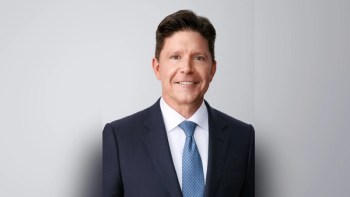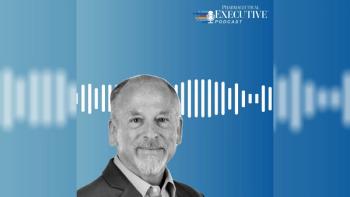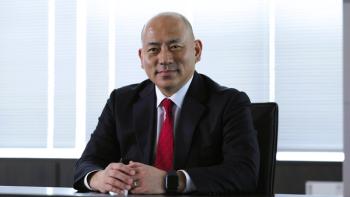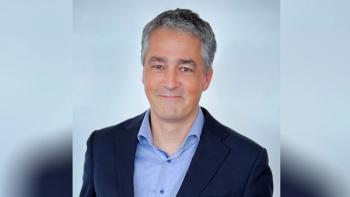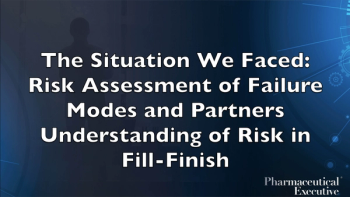
- Pharmaceutical Executive-07-01-2016
- Volume 36
- Issue 7
Keeper of the Name: Bayer's Habib Dable
Pharm Exec sits down with Habib Dable, a 22-year veteran of Bayer, to discuss his few first months at the helm of the company’s US pharma operations, where he is leading Bayer’s repositioning as a drug innovator and advancing its “all-in” approach to product partnering.
Long associated with that very earliest staple of the consumer medicine chest-aspirin-Bayer is today a company with a singular commitment to shortening the horizon line for drug innovations of the future. Leading that repositioning in the US-Bayer’s largest market-is Habib Dable, a 22-year company veteran and the man behind the launch of some of the
industry’s most successful brands, including ophthalmology blockbuster, Eylea. Recently, Pharm Exec sat down with Dable at the company’s expansive New Jersey headquarters to review the first few months since his appointment to the top US pharma position in October 2015, including Bayer’s all-in approach to product partnering and his faith in the positive tailwinds for patients coming from new gene-based therapy tools like CRISPR.
PE: With the adage that past is prologue, can you address the key elements of your personal and professional background. How would you describe the journey to your present status as head of pharmaceuticals for a major multinational player in what is today the world’s largest single market for biopharmaceuticals?
Dable: My story is the classic saga of the immigrant. My family background is Lebanese but I was born in Canada after my father decided to leave Lebanon in 1960 and establish what eventually became a successful business in the Atlantic provinces. In 1994, after receiving an MBA from the University of New Brunswick, I took a job with Bayer Canada as a sales representative. That was 22 years ago. Today, I am still with the company. Basically, it’s the only place I’ve ever worked. That is unusual, especially in today’s world, but it explains a lot about my temperament as well as the positive culture I’ve experienced at Bayer. When I find a supportive environment with the size and scale to allow for professional growth, I tend to stick with it.
I was very close to my father growing up. What he lacked in formal academic credentials was compensated by a formidable interpersonal awareness that helped him excel at networking and building strong stakeholder relationships. I’ve worked hard at emulating my father’s personal attributes throughout my time at Bayer. I believe in the convening power of great institutions. I am an active listener. In making decisions, I seek out people with different perspectives as a way to test my own judgment and avoid complacency.
In turn, Bayer Canada gave me excellent opportunities, including selection for the Bayer Management Trainee program in Toronto and, subsequently, as sales manager for the pharmaceuticals business in the Atlantic region. Then one of my managers offered me a position at Bayer Japan as head of strategic planning, which I took on with virtually no knowledge of the way business is done there. It was a bolt from the blue: Japan certainly had not figured in my career playbook up to that point. My role was to add more rigor to the marketing components of our commercial development plan for the country and to consider additions to our local pipeline portfolio in consultation with the business development team. That was my job description. But far more important was how quickly I learned that Japan is the most networked country in the world, one where close personal relationships are critical to business success.
PE: Japan is a crucible for many Western managers because of the adjustment required to fit within a unique culture of performance. What lessons did you draw from your three years there?
Dable: The time I spent in Japan honed the management skills that brought me to my present position. It stretched me in many directions. I was not Japanese, nor did I speak the language, but perhaps more important I was very young in a country that typically defers to age and experience. You cannot do business any way you like. There are rules, including the requirement to inform and consult stakeholders through near constant engagement; the importance, when it comes to decision-making, of pause and reflection versus the Western values of speed and spontaneity.
What I appreciated most about my time in Japan is that it takes time to build those relationships. Real investment involving the mind and the heart is expected-it was not an obligation that could be turned “on and off.” Hence, the relationships that result from this investment tended to be trustful, very
solid and loyal. To be honest, I was able to relate to these values because of the relationship I had with my father while I was growing up. His intelligence was of the emotional type that is now recognized as an asset that cannot be captured in a textbook-it’s a learned behavior, and not every manager is open to it.
PE: The US market is seen as the ultimate development assignment for managers at non-US based multinationals like Bayer. What brought you to the US?
Dable: Another opportunity came up through Bayer’s internal network while I was still in Japan. It too was a stretch assignment: to grow what was at the time Bayer’s premier North Carolina-based biologic drugs division. I arrived in the US in early 2003. I have been engaged in Bayer’s US biopharmaceutical business ever since, during a revolutionary period of change marked by strong, sustained growth; the US is now Bayer’s single-biggest market for medicines. And my connection became permanent when, along with the rest of my family, I became a US citizen in 2009.
The US is where I confronted my first serious management challenge. Although my assignment involved finding ways to expand our biologics business, which at the time centered on Bayer’s recombinant factor VIII anti-hemophilic therapy, Kogenate, it became apparent after several years that extending our range in plasma-derived biologics beyond hemophilia drugs was not going to proceed at the pace required to stay competitive. The conclusion we made was either get big-or go home. So we ended up keeping the recombinant factor VIII Kogenate franchise, based in our Berkeley manufacturing facility, and divesting the Bayer plasma operations in North Carolina.
Thus, in a very short time frame, I moved from a growth strategy, where I was expected to integrate several businesses at once, to a divesting role requiring a painstaking attention to detail as well as a lot of stress in handling the inevitable cutbacks. In retrospect, however, I find that the hard choices I made in conjunction with the US commercial and regulatory teams helped put us on course for the positive business trajectory in which we find ourselves today.
PE: Do you mean that the learnings from the divestment planted the seeds of future success?
Dable: Yes, in several ways. Scaling down Bayer’s stake in the plasma business highlighted the necessity of aligning a commitment with the resources necessary to achieve it. I resolved never to approach a task without it being adequately resourced, a premise that we now adhere to in executing around our R&D portfolio. A second key learning for me is the potential in creating partnerships with external players who have assets that complement what we have in-house. We do not necessarily have to do it all ourselves. Even a company with the worldwide resources of a Bayer has to stretch to retain a presence in a market as big and complex as the US. Partnering helps us to do that.
PE: Bayer Pharmaceuticals has posted steady gains in sales over the course of the decade, from 1% growth in 2011 to double-digits in 2014 and 2015. Five new product launches during this period are undoubtedly a factor here. Is this also the consequence of the accelerated commitment to partnering that came after that re-think of the company’s stake in biologics?
Dable: Two of Bayer’s biggest selling medicines globally, Eylea and Xarelto, are the product of external partnerships. Initially, the rationale for negotiating these deals was to better husband our resources. Now, having experienced directly the back and forth around both negotiations, I ascribe to the view that becoming a good partner -a partner of choice-should stand on its own merits. The benefits are more than making the best use of the resources at your disposal. The real gains come from combining different types of expertise, bringing in fresh human capital, opening up the cultures of both companies to different ideas and enhancing company reputation as a “go-to” source for the best innovations.
These are the strategic milestones by which every biopharma company wishes to be measured. Hence, for us, partnering carries weight well above and beyond our resource situation.
PE: It was only last October that you assumed overall responsibility for the pharmaceuticals business at Bayer US. What was your “script” in handling those critical first 100 days in the top position? What adjustments are required in management style and behavior when you make the transition from a narrow line assignment to lead driver and spokesman for the entire business?
Dable: It’s obvious that the first 100-day cycle of leadership requires a simple message, spoken directly to colleagues and customers. The higher you go in the hierarchy, the more important it is to communicate well -and to be authentic.
My approach was to highlight how far Bayer US had come in building a portfolio of treatments for patients, many of whom have few other options. I emphasized this was secured in two ways: (1) with a well-focused business platform consisting of products that promote plant, animal and human health; and (2) the specific commitment we have in pharmaceuticals to a partnering model that put us in a position of strength as deal-maker of choice in the US. I could point to the strong tailwinds produced by the previous leadership that allowed us to firmly position Bayer as a growth company, with most of that growth centered right here in the US.
One of our more important initiatives over the past six months is the opening of our East Coast Innovation Center at Kendall Square in Cambridge, MA, where Bayer scientists will have access to one of the world’s richest stores of academic, teaching hospital and industry research expertise. It’s a complement to the West Coast center we opened in 2011, adjacent to the UCSF science campus at Mission Bay in California.
Both areas represent hotbeds for R&D and innovation in the US. In April, we announced a plan to purchase 85 acres here at the Whippany HQ site for future development. All this new architecture really trumpets Bayer’s commitment to growth and strategic partnerships. Pooled expertise drives real value in medicine. If I somehow fail to get that message across to all our stakeholders, then I will have failed as a business leader.
The other message I focused on in my first 100 days was my confidence in the talent we have in place throughout the company. I cited many examples of the
true passion our colleagues have in working for patients. My philosophy is every manager should see him or herself as the president and CEO of the function they are responsible for. That’s how I look at the concept of empowerment. If you want to lead, it is necessary to go all out. Don’t get drawn into the narrow distinctions that perpetuate hierarchy.
When I was assigned back in 2008 to manage our co-partnering deal with Regeneron, I did think of myself as the president and CEO of Eylea. It was an ironic self-assessment, because at the time Bayer had no tangible footprint in ophthalmology. There were only a handful of us at Bayer working in this area. It was up to me to lead all launch preparations, create a business plan in the ophthalmology space, and, with Regeneron, establish a productive relationship to turn Eylea into a market success. Seeing myself as president and CEO for Eylea helped instill the confidence and focus required to maximize the potential from the Regeneron partnership, which continues to this day.
PE: How does your role fit into the Bayer US leadership team and the global organization?
Dable: Our US leadership team is comprised of functional and business leaders, including me and my counterpart commercial heads. This team operates under the direction of Phil Blake, who is president of the Bayer Corporation and leads all of Bayer in the US. The team is focused on Bayer’s business, our people and our reputation as a world-leading life sciences company in the US. We also work closely with Bayer’s global HQ in Leverkusen and the global pharmaceuticals business based in Berlin. There’s an appreciation at Bayer that the US is the largest and most important market in the world and one that embraces innovative companies such as Bayer.
PE: What therapy areas are you most excited about in terms of the future potential for patients?
Dable: The best example of the success we have had is the expansion of our stake in the hotly contested oncology space. A decade ago, Bayer had only one cancer drug, Nexavar, approved by the FDA in 2005 for one indication: advanced renal cell (kidney) carcinoma. Today, we market three FDA-approved drugs for cancer in six different tumor types. Nexavar now has approved indications for thyroid cancer and liver cancer, in addition to the kidney indication. Stivarga is approved for two indications, gastrointestinal stromal tumor and advanced colorectal cancer. Our newest oncologic, Xofigo, is indicated for treatment of advanced metastatic prostate cancer.
Although each medicine was developed in partnership with another company, today we are marketing these assets on our own. It entails recognition by the scientific and medical communities that, whereas 10 years ago we were unknown in the oncology space, Bayer US has now arrived as a player of consequence-and a source of hope for many thousands of patients with the hard-to-treat cancers we specialize in.
One deal that reflects our increasing appeal as a partner of choice is the partnership we negotiated with Orion Pharmaceuticals of Finland to develop its Phase III asset for prostate cancer. We see it as a complement to Xofigo, our existing therapy for this condition. Orion’s asset, ODM-201, has been well received by the medical community but the small company lacked the bandwidth to take it forward globally. Their management put out a first call for a partner to co-develop and commercialize ODM-201 in the US. It was a competitive process. And it was we who ended up with an agreement in which Bayer will fund further development costs around the Phase III trials in return for 100% of the US commercial rights to the product, upon FDA approval.
The arrangement signifies we have come full circle-to a company that others now look to as someone to help them do the heavy lifting-the partner of choice. I am proud to have helped make this transition.
PE: As a top US representative for a foreign-based company, how do you explain the US commercial pharma environment to senior managers back in Germany? The regulatory and reimbursement cultures are quite different.
Dable: There are many misperceptions in Europe about the US, mostly around the idea that pricing is simple because it is “free.” The reality is actually quite complex, with many shades of gray. Like other drugmakers in the US, we must allocate a large amount of resources to ensure our medicines are adequately positioned for appropriate use at the patient level. Details on such outlays to commercial insurers and payers often have to be explained when we present our numbers to HQ management.
As a counterweight, you have to educate and emphasize the many positives-the US is the heartland of medicines innovation, with the ideas, the money and the talent to bring great new products to patients. Last year, the FDA approved 45 new novel medicines, many for rare diseases where there are few treatments. FDA-approved products are also accessible to patients at a faster pace than elsewhere in the world. Key metrics show that the US remains the dominant, essential market for drug makers everywhere; if you cannot compete here, you are most likely also out of the running globally. This is the story we keep repeating to our colleagues in Europe.
PE: What additional strategic innovations can we expect from Bayer for the remainder of this year, continuing into 2017?
Dable: I am enthused by the prospect of a number of launch products coming up in the US. Our most recent launch, in March, of Kovaltry for hemophilia, is in its early building phase and we are confident of strong sales due to its convenient dosing profile. With Kovaltry, patients have the option of dosing twice or three times a week. Bayer is totally dedicated to the hemophilia/blood disorder space. Our labs are working on longer acting factor-VIII treatments, and we are investing significant funds in next-generation therapeutics like the CRISPR tool for gene editing. In addition, we have signed a partnership with Dimension Therapeutics where we are looking at a potentially ground-breaking gene-based therapy against hemophilia A.
I also want to reiterate our continuing commitment to women’s health, where we intend to defend our leadership role in drug/device interventions. For example, we are preparing for the prospective launch of a new IUD, hopefully by the end of this year. Bayer sees contraception as a critical issue in public health worldwide. We have a reputation to preserve in addressing the spread of unplanned pregnancies. Our R&D pipeline in women’s health also focuses on treatments for endometriosis and uterine fibroids.
Another area of strength for us is multiple sclerosis (MS). We continue to see the benefits from our flagship therapy, Betaseron. Recently, we launched a new device, Betaconnect, which will add to the convenience of patients with this chronic degenerative condition.
In the cardiovascular area, we are working hard to build sales and reputation for our recently launched drug, Adempas, which is indicated for patients with pulmonary arterial hypertension (PAH) and chronic thromboembolic pulmonary hypertension (CTEPH)-a major source of costly repeat hospitalizations.
I have an extensive background in the specialty medicine field, so you can expect to see Bayer moving further toward a portfolio focused on novel specialty medicines, including biologics intended for rare diseases. Innovation is what we do best. That’s what patients with high unmet needs are looking for. And to me the best examples are Bayer’s trio of oncology drugs. Our latest, Xofigo, is already embarked on a strong growth trajectory for its key indication in metastatic castration-resistant prostate cancer.
As noted, there are excellent potential synergies with our partner Orion Pharmaceuticals’ Phase III candidate, ODM-201, which shows potential in preventing progression to metastasis among patients whose cancer remains localized.
And we are testing a PI3K inhibitor that trial data indicates might be useful against third-line follicular lymphoma.
Putting it another way, Bayer is much more than aspirin. We intend to leverage all the assets we have in our three core fields -plant, animal and human health. Bayer, alone among its peers, is in a unique position to do
that.
You will also see a much stronger approach to building our management team and their capabilities. This conforms to our existing commitment to make sure Bayer remains a great place to work. We make investments in people for the long-term, as long lead times are the reality in this industry.
PE: Reaching out to others seems to be an important value for you as a leader.
Dable: It certainly is. Right from the time I came to the US, I made it a priority to listen to our customers. Today, I have a meeting with a disease advocate to hear his view about dealing with patients with prostate cancer. What are the gaps in care and how do we fill the spaces where presently there are zero options for pharmacology? What specialized services can we provide that will foster a better patient experience with drug therapy? For example, together with a leading VC firm, Versant Ventures, we have invested in a start-up called Inception 4 to expand our footprint in ophthalmology by looking at opportunities where the unmet medical need is very high. One example is childhood blindness, where there are no pharmacology solutions available today. These are deep conversations and they are designed to produce a result-for patients.
PE: What is your perspective on the role of teams in achieving operational excellence within the organization?
Dable: I spend a good deal of time monitoring the work conducted by our commercial teams. I see my task as setting a clear direction on goals and objectives, while standing back to bit to ensure the groups can think creatively and experiment, even if that means challenging the status quo. It’s this balance between the two aims that we want our teams to strive for.
PE: In addition to investing for growth, are there any major initiatives underway to reduce costs?
Dable: Finding efficiencies on the operating side is an ongoing priority. But, outside of what we continue to expect from all of our managers in holding down costs, there are no specific initiatives that we feel are necessary at this time. My focus is on successfully introducing new assets to the market, maintaining our positions around existing products and listening carefully to patients and other stakeholders to find additional ways to serve customers and improve our competitive positioning.
PE: Can you identify a possible “disruptive innovation” that might impact the biopharma business model in the next five years? How might Bayer plan to address it?
Dable: The good news is that there are many such innovations to choose, as we work in an industry that thrives on innovation and applies it to meeting serious unmet medical needs. The challenge for the industry is to keep pace with the accelerating scientific progress or preferably to be a bit ahead of it. For example, I am particularly excited about the possibilities of gene therapy.
In December 2015, Bayer entered into a partnership with CRISPR Therapeutics to investigate the development of gene-based medicines for patients with serious blood disorders, eye diseases and cardiovascular conditions based on the CRISPR/Cas9 technology-a novel approach that allows detection and correction of genetic mutations, opening a new avenue to cure disease. Blood, eye and heart diseases are areas in which Bayer is already focused, and so we plan to combine our knowledge and experience in these areas with the CRISPR/Cas9 technology and the existing expertise from CRISPR Therapeutics.
I’m also enthusiastic about our partnership with Dimension Therapeutics, based in Cambridge, MA, for the development and commercialization of a novel gene therapy for the treatment of hemophilia A. Dimension’s technology allows for systemic intravenous administration of the clotting factor gene in vivo, which has been shown in preclinical studies to target the liver, resulting in long lasting expression of the factor VIII protein at therapeutic levels. A lot to be excited about.
William Looney is Pharm Exec’s Editor-in-Chief. He can be reached at
Articles in this issue
over 9 years ago
Worlds Beyond the Clinicover 9 years ago
'PRIME' Time for Medicines in the EUover 9 years ago
Pill Countersover 9 years ago
Country Report: Italy, Part 2over 9 years ago
Pharmaceutical Executive, July 2016 Issue (PDF)Newsletter
Lead with insight with the Pharmaceutical Executive newsletter, featuring strategic analysis, leadership trends, and market intelligence for biopharma decision-makers.

